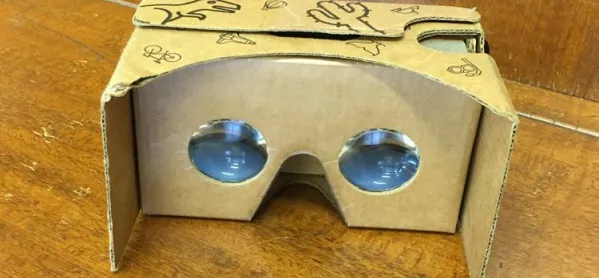When two classes of Year 3 students gathered in their school hall on Tuesday morning, they didn’t expect their teachers to tell them they were about to travel to Barcelona.
Or that the next stop would be Madrid. And then the Great Wall of China. And then a shark cage under the sea.
These pupils, from Henwick Primary School in Greenwich, were taking part in a session to showcase the free Google Expeditions app, which uses an ordinary smartphone and the Google Cardboard device to create virtual-reality (VR) learning experiences.
Google Cardboard is a cardboard viewer that was designed to be a low-cost platform for engaging with VR apps, such as Google Expeditions - which provides students with a 360-degree view of a location.
Led by their teacher, and while wearing their viewer, students can look around images of locations including the Grand Canyon, the Taj Mahal and the Great Barrier Reef.
Though this is an exciting prospect, the options for how you might practically use the app in class are fairly limited at present.
“I think it would work as a starter activity to get children talking - in the same way as we would use an image or a video clip,” said Claire Lotriet, assistant head at Henwick Primary School and ed tech blogger for TES.
“The way we do topics is we do them as ‘learning journeys’, so this would really lend itself to that.”
‘Real excitement’
While the technology might not transform how teachers structure their lessons, the response from students was far more dramatic than would be elicited by simply showing an image using an overhead projector. The children screamed with excitement as they viewed each new location.
“I feel like I’m floating and falling,” one Year 3 pupil said.
“My brain is telling me it’s real when I know it’s not real,” said another.
Although more sophisticated VR tools, such as the HTC Vive and Oculus Rift are on the market, this technology has not been readily available to most schools.
“There is not a lot of VR technology out there at the moment and what is there is very expensive. So this is an affordable option,” Lotriet said.
The Henwick Primary pupils’ reactions to the Google Expeditions app seem to suggest that it would be worth teachers downloading it for the novelty value alone.
However, the children were not completely without criticism for the app.
“I’m a bit scared of heights,” one Year 3 student said, “so if it could just be on the ground then that would be an improvement for me.”
Henwick Primary School was taking part in the Expeditions Pioneer Programme. You can express your interest in taking part here. You can also find out how TES is creating free learning expeditions as part of the Pioneer Programme.
Want to keep up with the latest education news and opinion? Follow TES on Twitter and like TES on Facebook





